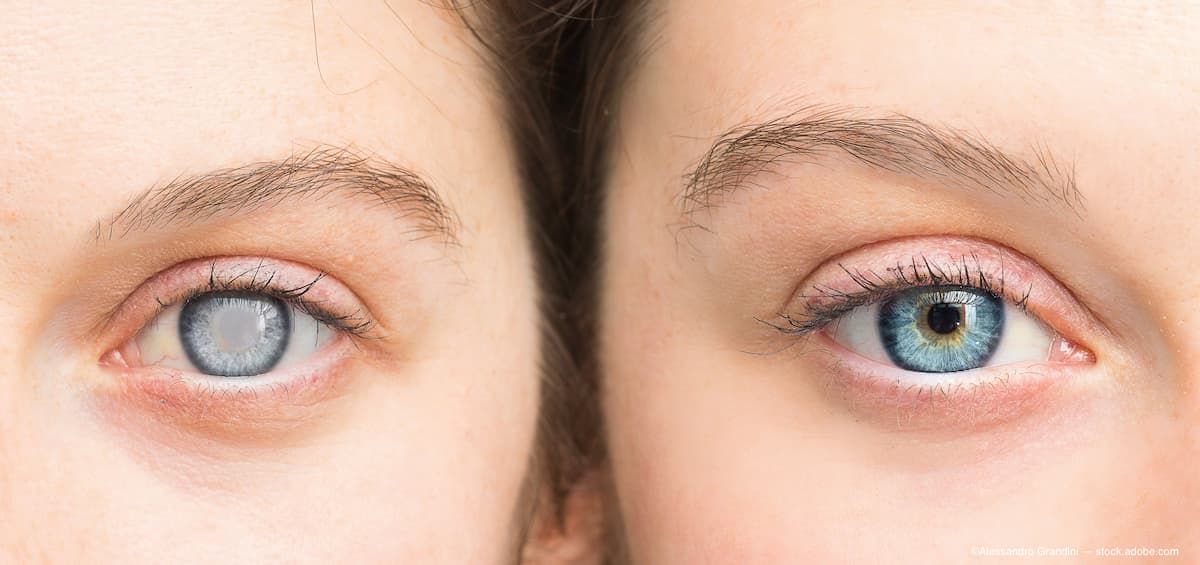Article
Pressure equalizing maneuvers solve the problem of incomplete FLACS caps
Author(s):
A technique to assure complete separation of the cap and prevent a radial tear has been perfected by Steve Arshinoff, MD.
Watch part II of the procedure here
Although refinements in cataract surgery femtosecond laser systems have reduced the incidence of incomplete caps, the issue has not been completely eliminated.
During the ASCRS-ASOA annual meeting, being held May 3-7 at the Convention Center in San Diego, CA, Steve Arshinoff, MD, described a technique he uses to assure complete separation of the cap and therefore prevent a radial tear.
Dr. Arshinoff, directing partner, York Finch Eye Associates, Toronto, and associate professor of Ophthalmology and Vision Sciences, University of Toronto, Toronto, Canada, is widely known for using ophthalmic viscoelastic devices (OVDs) to improve cataract surgery safety, so it comes as no surprise that an OVD is part of his solution. He terms the technique the OVD Press and said that it is based on the principle of pressure equalized cataract surgery.
“OVDs are pseudoplastic fluids that can create an optimized anterior chamber environment for surgery through several mechanisms, including by their ability to induce pressure in the space where injected,” Dr. Arshinoff said. “In eyes with a laser-created capsulorhexis, injecting OVD over the center of the capsulorhexis equalizes the force created by intracapsular gas pressure and prevents an errant tear.”
Dr. Arshinoff told attendees that he was prompted to come up with the technique during a case where he realized after raising the microscope magnification that the femtosecond laser-created cap he originally thought was free had a significant region of incomplete separation.
“Now I am using the OVD Press technique routinely as an added safety measure in all femtosecond laser-assisted cataract surgery cases. It represents a subtle and simple change to my overall procedure and adds just a few seconds to the case. Most importantly, I have not had a single anterior capsule tear in the past year since I started using it,” said Dr. Arshinoff.
Theories and techniques
Dr. Arshinoff said that from the time he first began to perform FLACS, part of his routine would be to inject a mixture of lidocaine and phenylephrine through the side port incision as the first step in surgery. He explained that this provided several benefits as it increases patient comfort, helps to prevent pupil constriction that can be induced by femtosecond laser treatment, and, by raising IOP and deepening the anterior chamber, it helps the surgeon see if capsulorhexis separation is complete.
Faced with a cap that was only approximately 90% free, however, Dr. Arshinoff knew he needed an additional strategy to complete the tear in the face of positive posterior gas pressure.
“I reasoned that if I tried to separate the cap by pulling on it, the capsulorhexis would likely tear out because of the increased pressure coming from behind,” he said.
So instead, he decided to take advantage of the force that can be induced anteriorly with an OVD to equalize the intracapsular pressure. The inspiration for the idea was related to his realization that the tearing risk is due to increased intracapsular pressure, similar to the Argentinean flag sign risk with hypermature white cataracts.
“I thought that what I do to prevent the Argentinian flag sign in an eye with a hypermature white cataract is to inject a viscoadaptive OVD. The pressure induced by the OVD equalizes the pressure inside the capsule. At the same time, it creates a concave depression in the center of the capsule, and according to simple principles of physics, prevents the capsule from tearing in any direction except at the circular margin surrounding the depression,” said Dr. Arshinoff.
Building on the goal of counteracting intracapsular pressure, Dr. Arshinoff combined the OVD injection with a capsulorhexis technique he learned decades earlier from James Gills, MD, who would fold the capsulorhexis flap inward, rather than over anteriorly as he opened the anterior capsule.
“Again, based on physics principles, the capsule will tear very well whether the flap is folded in or out as long as it is being pulled at a 90º angle to the capsular plane in a shearing motion like scissors. Folding the flap inward, however, has the advantage that it helps to neutralize any positive posterior pressure,” he said.
Technology choices
Dr. Arshinoff’s choice of OVD is based on its ease of administration rather than its viscous properties alone.
“The anterior chamber can be a bit shallow in FLACS cases because of the intracapsular gas generation. I like to use Healon GV or Healon in these cases because they are both viscous cohesive OVDs and come with a long thin cannula that can be readily placed in front of the capsulorhexis even when the chamber is not deep,” he said.
After waiting about 10 seconds for the lidocaine/phenylephrine mixture to take effect, the OVD is injected through the main surgical incision over the center of the capsule until it creates a concave depression in the capsulorhexis center. Next, Dr. Arshinoff introduces an Epsilon ERF-26 forceps, first using it to press around the full perimeter of the capsulorhexis to free any incompletely lasered areas using a “Gillsean” rhexis technique. He then grasps the cap centrally with the forceps, to remove it once the tear has been ascertained to be complete.
“I was using the OVD cannula tip to depress the edge, but then I realized it was more efficient to use the forceps,” he said, adding that he likes the Epsilon ERF-26 forceps because it features long flat blades hinged at the incision, which make it easy to maneuver across the entire anterior chamber.
Disclosures:
Dr. Arshinoff is a consultant to companies to design and market OVDs, but not for anything related to this presentation.





